April 5, 2024
We are rapidly approaching the 2024 solar eclipse! A solar eclipse marches across a large area of North America on April 8, 2024. Solar eclipses are uncommon events that draw significant interest and fascination. We are just seven years removed from the last total eclipse in the United States. The previous eclipse occurred in August 2017. You can expect media coverage to increase as we approach April 8 as most of Mexico, the United States and eastern Canada experience the eclipse.
What Creates an Eclipse
Solar eclipses are uncommon because you have to have an alignment of the Earth, Moon and Sun. The moon must be in a position between the Sun and Earth that blocks solar radiation from the Sun to create a shadow of the moon onto the Earth. Figure 1 below shows how the Moon travels between the Earth and Sun to create a shadow onto the face of the Earth. For the remainder of this article, the shadow of the moon is referred to as the eclipse or solar eclipse.
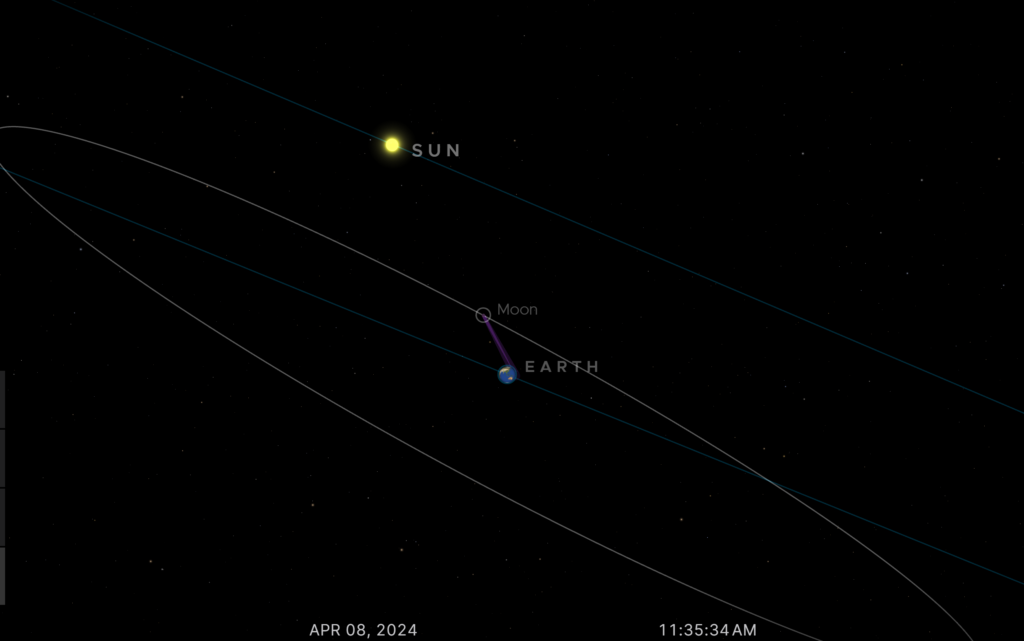
As the Earth spins and the Moon orbits the Earth, the eclipse travels across the Earth’s surface. Figure 2 illustrates the eclipse projecting from the Moon onto the Earth’s surface. Because of the size of the Moon and the distance from the Earth and Sun, the eclipse does not cover all of the Earth.
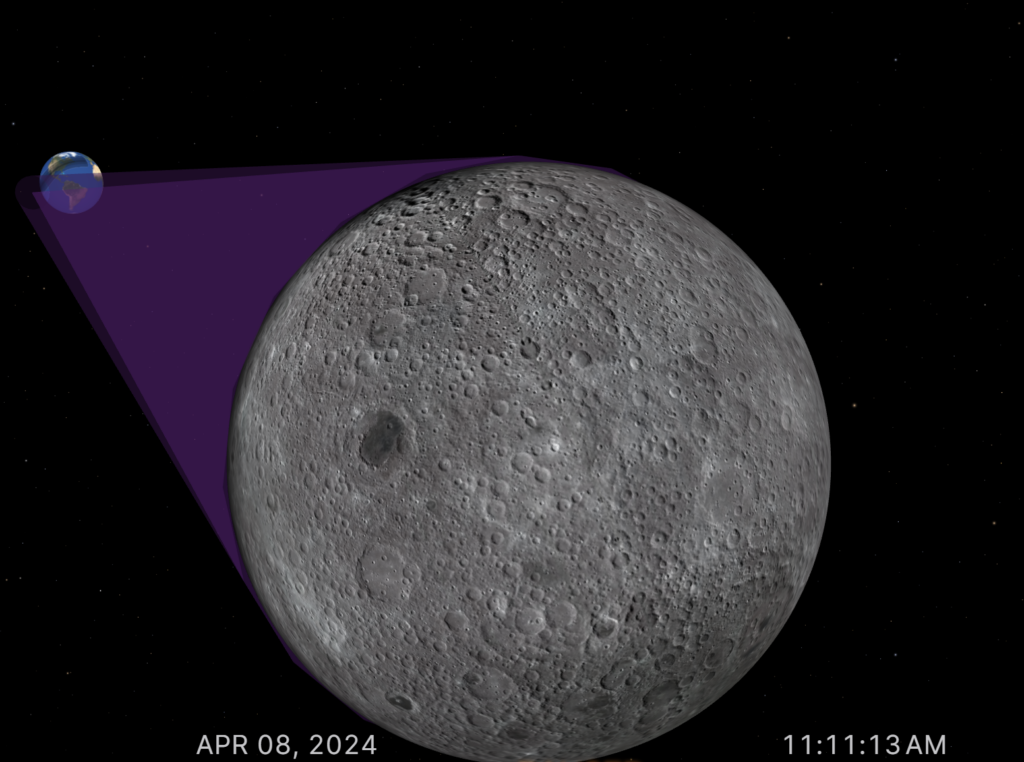
Most locations in North America, in the path of the eclipse will experience a partial eclipse. A partial eclipse occurs when part of the Moon passes in front of the Sun. A total eclipse occurs when the Moon blocks the entire Sun. Figure 3 is a picture of a partial eclipse in Arlington, Virginia from 2021. That crescent shape is the Moon (dark area) partially covering the Sun. Based on the picture in Figure 3, it looks like the picture was taken when the sun was around 50% eclipsed.
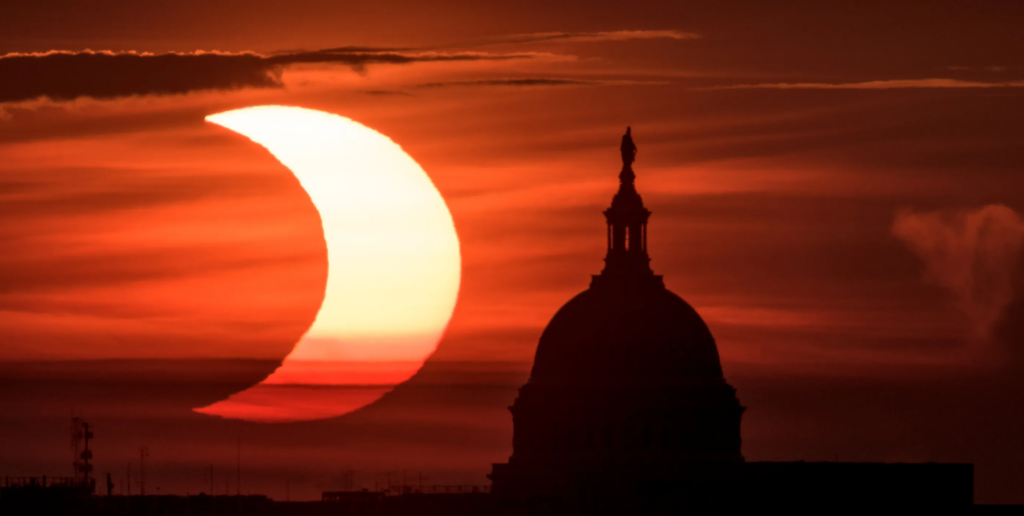
On April 8, 2024, only a small area experiences a total eclipse. Figure 4 is a map of the eclipse traveling from the Pacific Ocean to Mexico north and east into the United States and then Canada and the Atlantic Ocean. The shadings represent how much of the sun is blocked by the moon. The total eclipse is in the darkest shade of grey and travels from Mazatlán, Mexico north and east to Waco and Dallas, Texas. The total eclipse then travels over Little Rock, Arkansas and Carbondale, Illinois. Additional cities with total eclipse are Indianapolis, Indiana; Cleveland, Ohio; Buffalo, New York; Niagara Falls, Ontario; Montreal, Quebec; Burlington, Vermont; and Caribou, Maine.
Eclipse Timing
The eclipse begins late morning on April 8 in Mazatlán, Mexico and ends by late afternoon over New Brunswick, Prince Edward Island and Newfoundland. Once the total eclipse begins, it takes approximately an hour and twenty minutes to reach total eclipse. The total eclipse is forecast to last 2 to 4 minutes. An hour and twenty minutes later, the eclipse is over. So, from start to finish, expect the process to take two and a half hours for locations in the path of total eclipse. The duration is shorter in locations with partial eclipse (most locations in Figure 4). Figure 4 shows that most of Mexico, the United States and Eastern Canada experiences a 50% to 100% total eclipse.
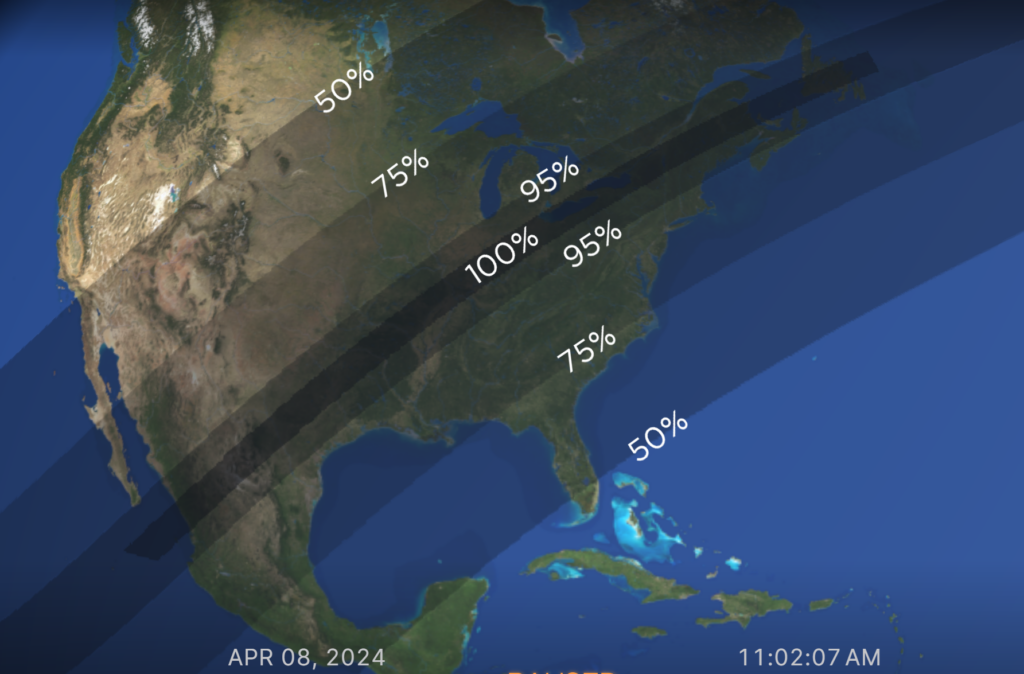
Eclipse Weather Forecast
Of course, the weather forecast is critical to how people will experience the eclipse. Cloud cover at the wrong time can really diminish the experience. I recommend checking with the National Weather Service to receive the latest forecast for Monday, April 8. Visit to https://www.weather.gov/ for the latest forecast. Enter the zip code of the location you will experience the eclipse and receive your forecast. The red highlighted area in Figure 5 is where you enter your zip code.
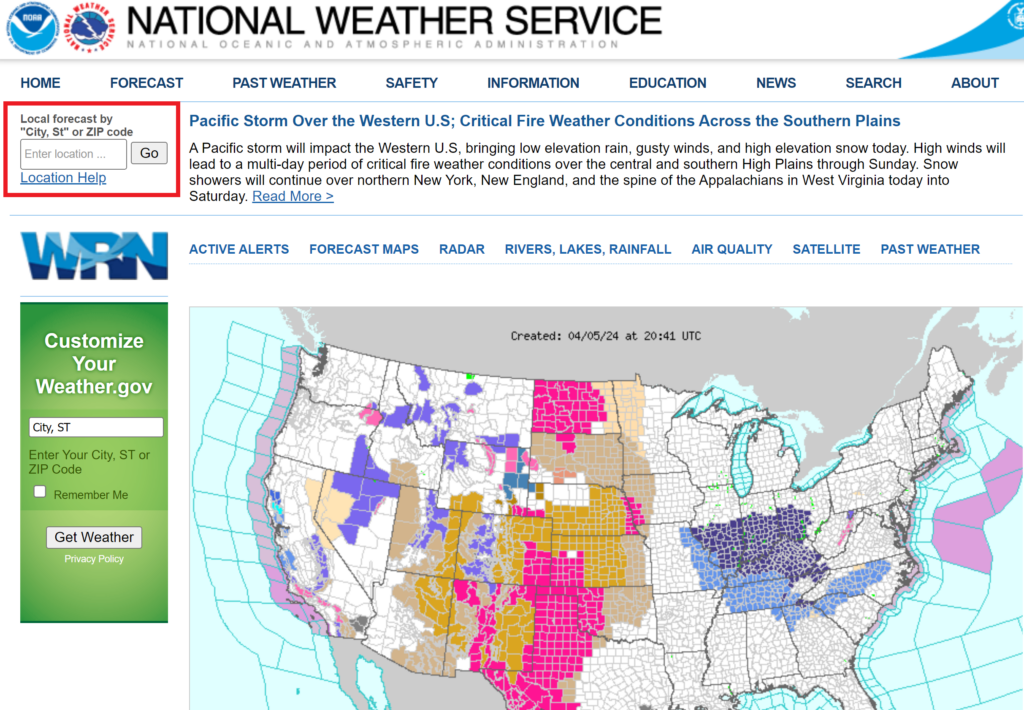
Figure 5. Landing page of the National Weather Service
Follow all safety instructions and use the links below for additional information from NASA, The National Solar Observatory and the National Weather Service. I hope you enjoy the eclipse safely.
Additional Resources
NASA: https://science.nasa.gov/eclipses/
National Solar Observatory (NSO): https://nso.edu/for-public/eclipse-map-2024/
National Weather Service (NWS): https://www.weather.gov/

Recent Comments